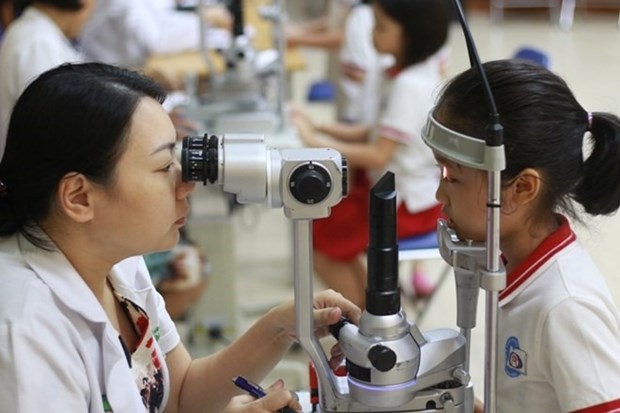Kiosks at Hanoi hospitals for patients’ comments
Hanoi plans to put up kiosks at hospitals for people to lodge complains or their dissatisfaction about health check-ups and treatment quality via a software.
 An eye doctor at Hanoi Eye Hospital No 2 examines a patient. Illustrative photo. (Source: VNA)
An eye doctor at Hanoi Eye Hospital No 2 examines a patient. Illustrative photo. (Source: VNA)Hanoi (VNA) — Hanoi plans to put up kiosks at hospitals for people to lodge complains or their dissatisfaction about health check-ups and treatment quality via a software.
These complaints and opinions will then be sent to the municipal Department of Health, according to deputy director of the department Tran Thi Nhi Ha.
People will use the software installed at these kiosks and tick on what they feel satisfied or dissatisfied with, relating to health check-ups and treatment services at hospitals in the city, and the department can know immediately how many complaints each hospital receives from patients each day, she said.
For example, patients can assess the time they have to wait for a health examination, the payment method, fees charged and the attitude of medical workers towards patients.
The move is aimed at improving the quality of health services, thus helping to increase patients’ satisfaction, she said. Increased satisfaction from patients means the hospitals would have more patients and more income, she added.
|According to a survey by the health department, up to 96 per cent of surveyed patients were satisfied with the services of local health establishments and attitudes of medical workers in 2017.
However, Ha said the figure did not reflect the reality of the whole picture of the city’s health sector.
Therefore, the department will install kiosks equipped with software to provide more opportunities for patients to review or comment on health services at hospitals more objectively and proactively. The move will be seriously implemented to force hospitals to renew and improve the quality of their health services, Ha said.
The Ministry of Health in 2016 issued a set of criteria to assess hospitals on improving services and increasing patient satisfaction.
The 83 criteria were tested over a three-year basis.
Nineteen of the criteria were related to patient care, 14 to workforce development, 38 to professional quality, eight to quality improvement and four to professional knowledge.-VNA













